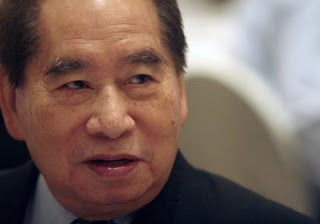PH targets Top 3 place
in global coco coir exports
BY IRMA ISIP
Malaya Business Insight
09 March 2011
The Philippines hopes to make it to the top three of the world’s leading coconut coir exporters by harnessing the material’s potential for industrial use.
"While we have abundant supply of coconut husk, we lack decorticating machines and farm-to-market roads to facilitate processing of coco coir into high-value products,"
Merly Cruz, trade undersecretary for the regional operations, said.
Because of this, coconut husks are usually thrown away.
"We are exploring a scenario where Philippine coco coir gets a better market share in the world market while sustainably positioning itself in the domestic market," Cruz said.
The Philippines is No. 5 in the export of coco coir after India, Sri Lanka, Vietnam and Indonesia. "We want to move up to No. 3," she said.
The domestic market for coco coir was given a boost when Memorandum Circular 25 was issued in 2002
The circular mandates the Department of Public Works and Highways to use coconut-based materials (such as coco coir and coconets) in construction of infrastructure like bridge approaches to strengthen the soil and to prevent erosion.
It also mandates the use of geotextile or coconet to control soil erosion as well as coco dust and coconut fiber materials for soil conditioning and erosion control.
Cruz said the government is working with the DPWH to validate the requirements each year. This way, the government would be able to monitor compliance.
Cruz said coco coir is in big demand in China and Japan.
For example, coco coir (not twined but rubberized) can be exported to China for use in the manufacture of mattresses.
"China needs 100 million mattresses per year," Cruz said.
Coco coir is being exported for various applications such as upholstery, molds/pots and twines, but Cruz said the Philippines should target higher-value products to be more profitable.
Husks are used in hydroponic farming as well as beddings for animals in Japan.
Coco dust is used as planting beds as it helps regulate the release of fertilizer in the soil.
Cruz said the number of coconut farms is dwindling because of the demand for housing.
"We need to expand our coconut farms and make them productive. We need to fertilize and replant. This is the thrust now," she said.
The issues are expected to be addressed when the Department of Trade and Industry, the Department of Agriculture, the Philippine Coconut Authority and the Philippine Coco Coir Export Producers Association hold a summit in Davao City on March 30 to craft a master plan for coco coir industry.
The country remains as the world’s leading supplier of traditional coconut products. It is the top producer of copra cake and coconut oil.
However, due to copra price fluctuations in the world market that make coconut farmers vulnerable, production has expanded to other value-adding products as such coco charcoal, activated carbon, coco coir, coco peat and coco virgin oil.
Coco coir and coco peat are among the promising coco-based products with huge market potential due to their wide array of uses and eco-friendly qualities.
The country has more than 50 coco coir producers.
The Philippines is way behind India in coir production despite its large potential for fiber production with only 14 percent share of the world market.
Major markets of coir from the Philippines include China South Korea, Taiwan, Hong Kong, Japan, Singapore, Australia, the United States, Canada and Britain.
The coconut husk is made of bristle fiber (10 percent), mattress fiber (20 percent) and coir dust and shorts or wastes (70 percent).
The abundance of fiber provides a good, stable supply for cottage industries that make brushes, doormats, carpets, bags, ropes, yarn fishing nets, and mattresses.
Coir fiber can also be used as substitute for jute in making rice, copra, sugar and coffee bags and sandbags. It is also suitable for making pulp and paper.
Wall boards are made from coir dust and short fibers. No binding materials are needed as lining is inherent in the coconut husk. Also, coco wall boards are termite-proof because creosote is present in the new material. The board produced is as good as narra, plywood or masonite.
Coir yarn, coir rope, bags, rugs, husk decors, husk polishes, mannequin wigs, brushes, coirflex, and fishnets are other products that can be made from coco husk. From coco dust come coco gas, lye insulators, insoflex and plastic materials.
Coconuts are abundant in the Davao region, Bicol region, Eastern Visayas (Samar and Leyte), and Southern Tagalog, but not all have enough processing plants for coco coir.
This year, coconut production will hit 2.415 million metric tons in copra terms.
Statistics posted on the website of the Philippine Coconut Authority show that of the 12 million hectares of farmlands, 3.1 million hectares are devoted to coconut.
The country has about 324 million coconut trees, 85 percent of which are considered productive.
There are 3.5 million coconut farmers.







